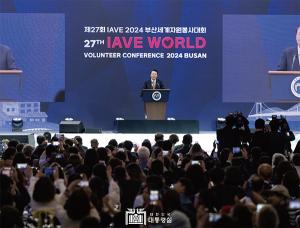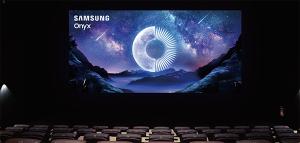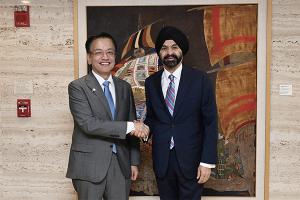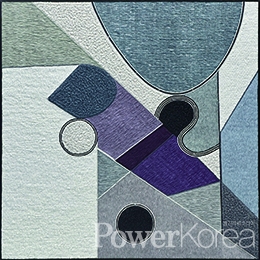 |
Hanji was a fateful existence that determined the trajectory of my life. Since my first encounter with hanji in 1997, I have been exploring the path of a hanji craftsman for over 30 years. Going beyond the framework of hanji crafts and stepping into the new realm of two-dimensional painting was my challenge to explore the infinite possibilities of hanji and expand its limits. I realized that a unique texture was created through the process of pounding three layers of hanji, and here I attempted to implement the characteristics of three-dimensional craftsmanship into an abstract painting on a two-dimensional plane using a unique material called bimji (a string made by twisting hanji). This work reflected my desire to convey the infinite diversity and beauty of hanji to more people. My work utilizes the structural elements of Hangul, namely vertices, to express thematic consciousness with points, lines, and planes. My artistic approach of capturing the emotions of Korean tradition in the physical properties of hanji while reinterpreting them with a modern aesthetic is an endless exploration and challenge to open up new artistic realms. (From the notes of Korean Paper Artist Lee Yu-mi).
Lee started out as a traditional hanji artist, and more than 25 years later, she has been certified as a master by the Federation of Artistic & Cultural Organization of Korea. A pioneer in the art of hanji and a teacher of many students, she traveled to Korea Week 2024 in Ulaanbaatar in late summer after being contacted by the Mongolian Embassy to collaborate.
 |
Q. Tell us about the exhibition in Mongolia.
A. It was a great pleasure and honor to showcase the art of hanji bimji in Mongolia. It was even more meaningful to be able to help promote Korean culture as hanji continues to grow in popularity around the world.
Q. Did visitors show interest?
A. They were fascinated by the various crafts made with Hanji and even tried them out themselves. Personally, I was very satisfied with the experience and hope to have more such cultural exchanges in the future.
Q. We learned you are on a new challenge.
A. I was very conflicted about taking on a new challenge as a hanji bimji artist, and I still need to think a lot about it .But the idea of painting with hanji is very appealing, and I'm going with that feeling alone.
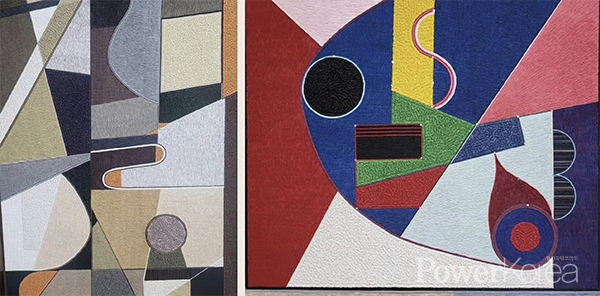 |
Q. Tell us about winning a prize.
A. I have been steadily going to various competitions to get my work evaluated. This year, I submitted a 60 size. Bimji painting is a very long and demanding process where you have to lay the paper down after it dries, so there are many constraints. Even though I have more than 25 years of experience in crafts, I am literally a non-professional in the field of painting, so I thought, “Will I be able to survive at this level?” Still, it was refreshing to win the first challenge. I think I had about 15 exhibitions in 2024. I was very curious about how the public would view the hanji bimji paintings, and thankfully, the reviews were very good. The directors and gallery managers were very favorably impressed and made generous offers. I also sold quite a few pieces. After going through all of that, I realized that it wasn't so bad. They seemed to be more interested in it because it was a new technique. It's something that no one else is doing, using Hanji as a material. I still have a long way to go. I have to decide whether to categorize my work as oriental or western.
Q. How do you create your work?
A. I use a lot of traditional Chinese paper tapping methods, but I still find it difficult to get it dry while it's still wet and then move on to the next piece. I'm slowly getting the hang of it by researching how to make it faster and easier. I don't plan my drawings before I start, I draw as I go, and the story is added as I go. I lean towards abstraction. For example, I write down Korean characters, connect them with vertices, make lines, make faces, graft hanji, and record them in a notebook. There are a lot of colors, but with hanji, you can't get 100% of the color you want. Nowadays, when I work on Korean abstracts, I focus more on how I feel that day. I try to let my daily life lead me to the expression as much as possible, rather than trying to feel something artificially.
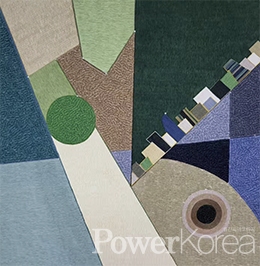 |
Q. What do you think or feel when you make a work?
A. I always have a panel in front of me and I think about it. I have a design and I have to play with it. I draw my own lines on the panels, so I tend to imagine a lot before I start working. It's a process of twistingn and gluing. I've just made my debut as a new artist, but I've been working with Hanji for the past 30 years, so I know its properties and have touched it a lot. I was able to recognize the hanji's behavior from the beginning, and experienced whether it should be increased or decreased.
Q. What do you think made you win a prize?
A. I ascribe it to my unique work of hanji and bimji. As I said earlier, people show a great interest in my works. To their eye, the method and materials I use probably enchanted them.
Q. What does hanji mean to you?
A. Hanji is like breathing to me. It is always beside me. I can shape it into any shape I want at my fingertips, and when I tap on the hanji, which is made from the trunk of a tree, it intertwines and blends into new colors. It's as if the highs and lows of my life are intermingled to create a peaceful self. Hanji is my life. It’s inevitable.
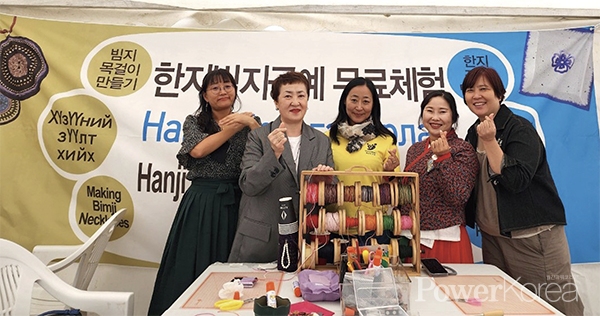 |
Q. What are your next move?
A. I’m expecting an overseas exhibition. I would like to expand my world of hanji and bimji to more people in the world. In that sense, I’m planning to participate as many exhibitions and fairs as possible home and abroad. I hope my works will give something touching or memorable to appreciators.
지윤석 기자 jsong_ps13@naver.com

